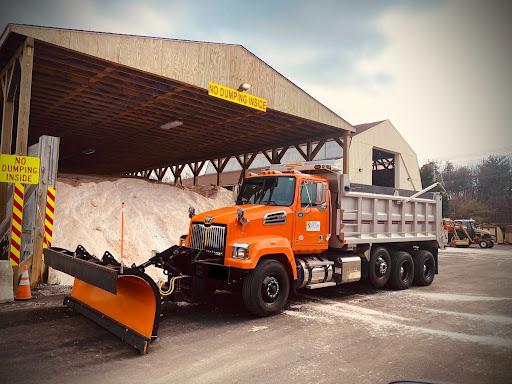-
 Who Plows My Street?
Who Plows My Street?Determine if the Department of Public Works is responsible for plowing your Street.
-
Snow Removal Map
Access an online application to track the county's plows and view snow/ice removal efforts.
-
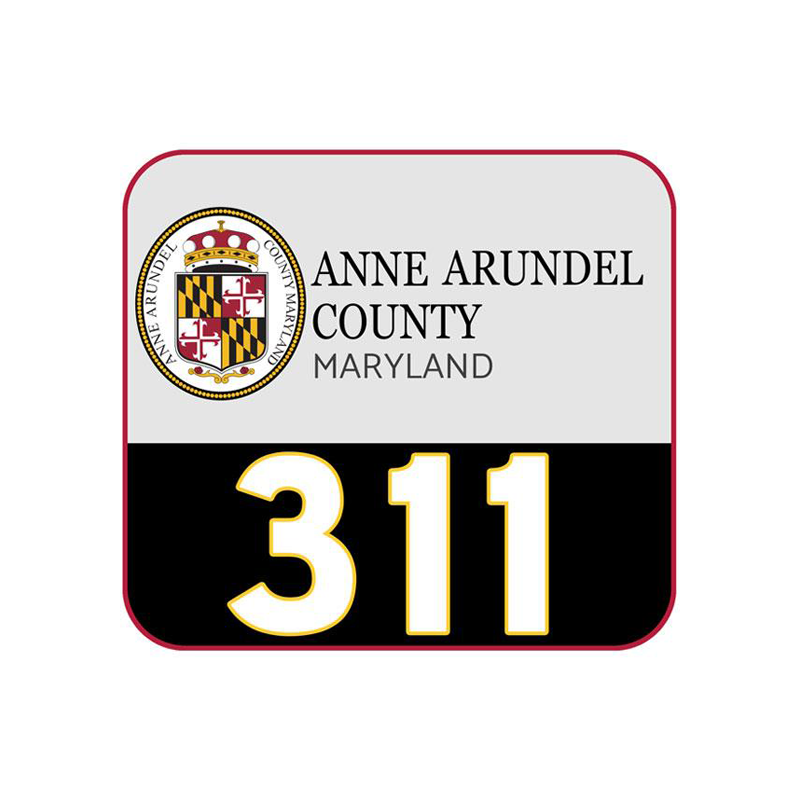 Submit an Online Service Request
Submit an Online Service RequestReview the level of service assigned to your street & if warranted submit a Service Request.
Snow Operations
The County is responsible for treating and plowing over 6,700 County-maintained roads in Anne Arundel County. When it snows, up to 350 employees and 74 snow plows supported by other pieces of snow fighting equipment spring into action. In addition, over 100 pieces of additional contractor equipment can be mobilized as necessary. These resources are deployed according to our Travel Guide, which differentiates among the various road classifications. Throughout a snow storm event, the County focuses its salt use on main roads, hills, curves, cold spots and intersections. Residential streets are only salted if required.
As a reminder, the county focuses on clearing roads to ensure safe travel, while snow and ice removal from sidewalks is the responsibility of property owners, as outlined in the county code. To help everyone get back to school, work, and play safely, we encourage neighbors to lend a hand where needed.
Below are the planning stages for the County’s winter storm operations:
- Stage 1: At the beginning of a storm event, County crews patrol, and monitor road conditions, and pre-treat roads.
- Stage 2: When the snow or freezing precipitation begins to cover the roads, the County spreads salt on main roadways and bus routes.
- Stage 3: When the snow accumulates to an inch or more , crews begin plowing operations focused on main roadways and primary neighborhood streets.
- Stage 4: Once the snow stops, County crews work to achieve bare pavement on arterial and collector roads and ensure passable conditions on all residential streets.
- Stage 5:County crews complete final clean-up (as long as the snow has stopped).
Getting Ready Early:
The dedicated staff of the Bureau of Highways (BOHs) is busy preparing for winter snow and ice control activities long before the first hint of snowfall. During the spring months, a thorough review of the previous year’s winter contracts and outreach activities is conducted. During the summer months, we first evaluate our fleet and staffing needs for the upcoming season. Each Fall, our fleet of vehicles and equipment are then serviced and maintained to meet the demands of the winter season.
Controlling Costs:
Snow and ice removal activities and the expense of our operations are reviewed each year. One cost control effort employed by the County is the use of private contractors. The process of securing snow removal contractors begins in July. Similary to the County fleet, contractor equipment is inspected and prepared for winter service each Fall.
Salt Storage:
Anne Arundel County uses covered storage facilities for its road salt and stores a total of approximately 18,500 tons of salt at the following locations: Dover Road (Glen Burnie), Mountain Road (Pasadena), Crownsville Road (Annapolis), Broadneck Road (St. Margarets), Duckins Street (Odenton), West Central Avenue (Davidsonville), and at a storage yard in Friendship, MD. At the present time, a growing portion of Anne Arundel County’s fleet is also equipped with liquid pre-wetting equipment that applies salt brine or calcium chloride directly on the rock salt. Pre-wetting dry salt during its application helps the salt to adhere to the roadway. In contrast, dry salt can “bounce” and blow off the roadway and be less effective.
Environmentally Responsible De-icing:
De-icing materials are an effective tool for maintaining safe winter road conditions. However, the County is aware that excessive use can have negative impacts on the environment. Heavy use of road salts has been assessed to cause damage to vegetation, organisms in soil, birds and to other wildlife. Chloride ions from road salts find their way eventually into waterways, whether by direct runoff into surface water or by moving through the soil and groundwater. In surface water, road salts can harm freshwater plants, fish and other organisms that are not adapted to living in saline waters. The County adheres to a salt management plan to only apply as much salt as necessary to achieve safe driving conditions.
In winter months, as soon as snow begins to accumulate, equipment is dispatched to service main and collector roadways. Main and collector roads will be plowed to bare pavement. Our next priority will be ensuring residential streets are passable. Passable is not the same as bare pavement. Passable means that although the road may be snow-covered or snow-packed, at least one travel lane will be accessible with a front-wheel drive car. All-weather tires are a must. If our snowplow driver determines that your street meets our definition of passable, no further service will be provided. For more information regarding our service levels during inclement weather, please view our Travel Guide
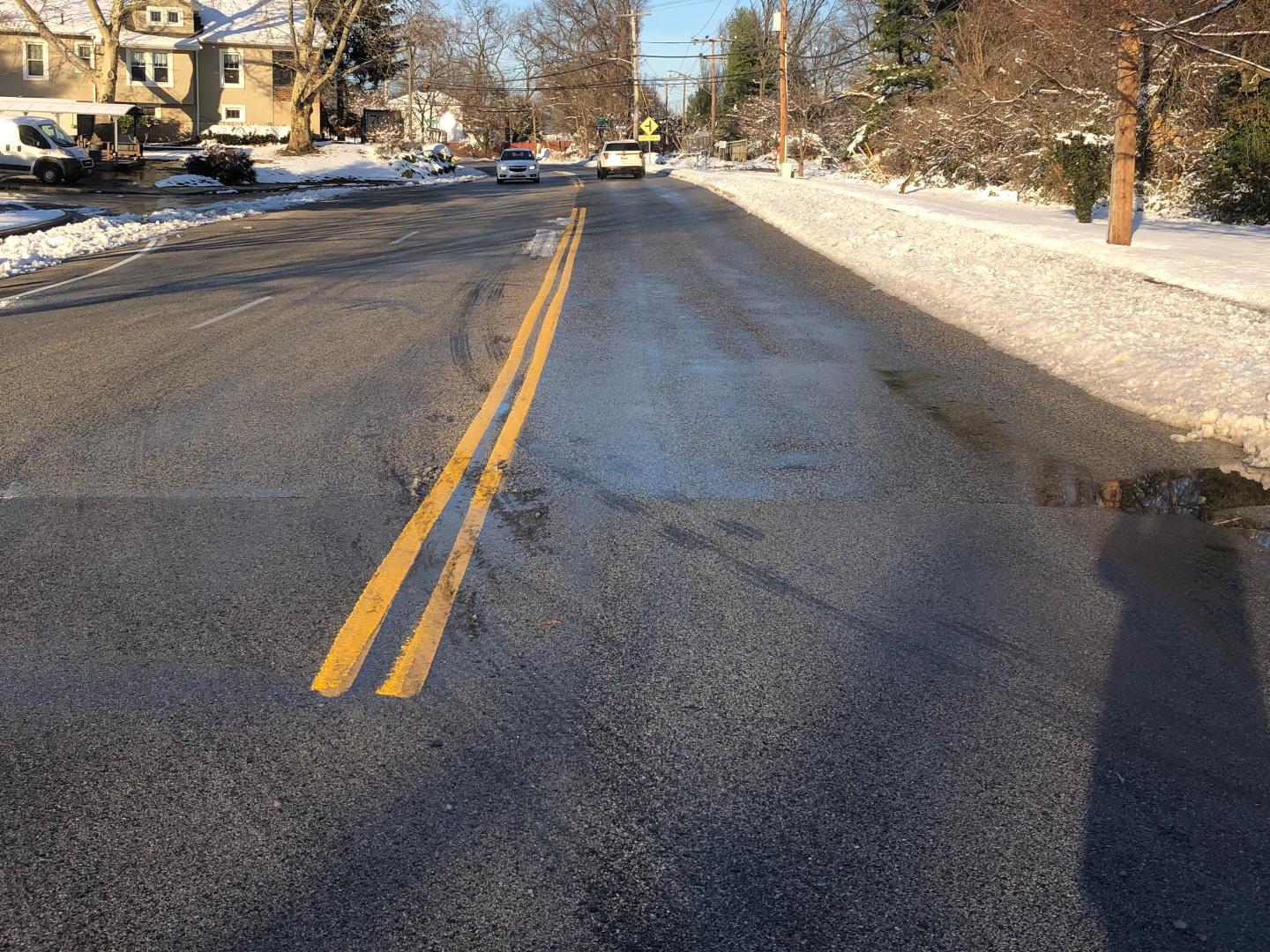
| 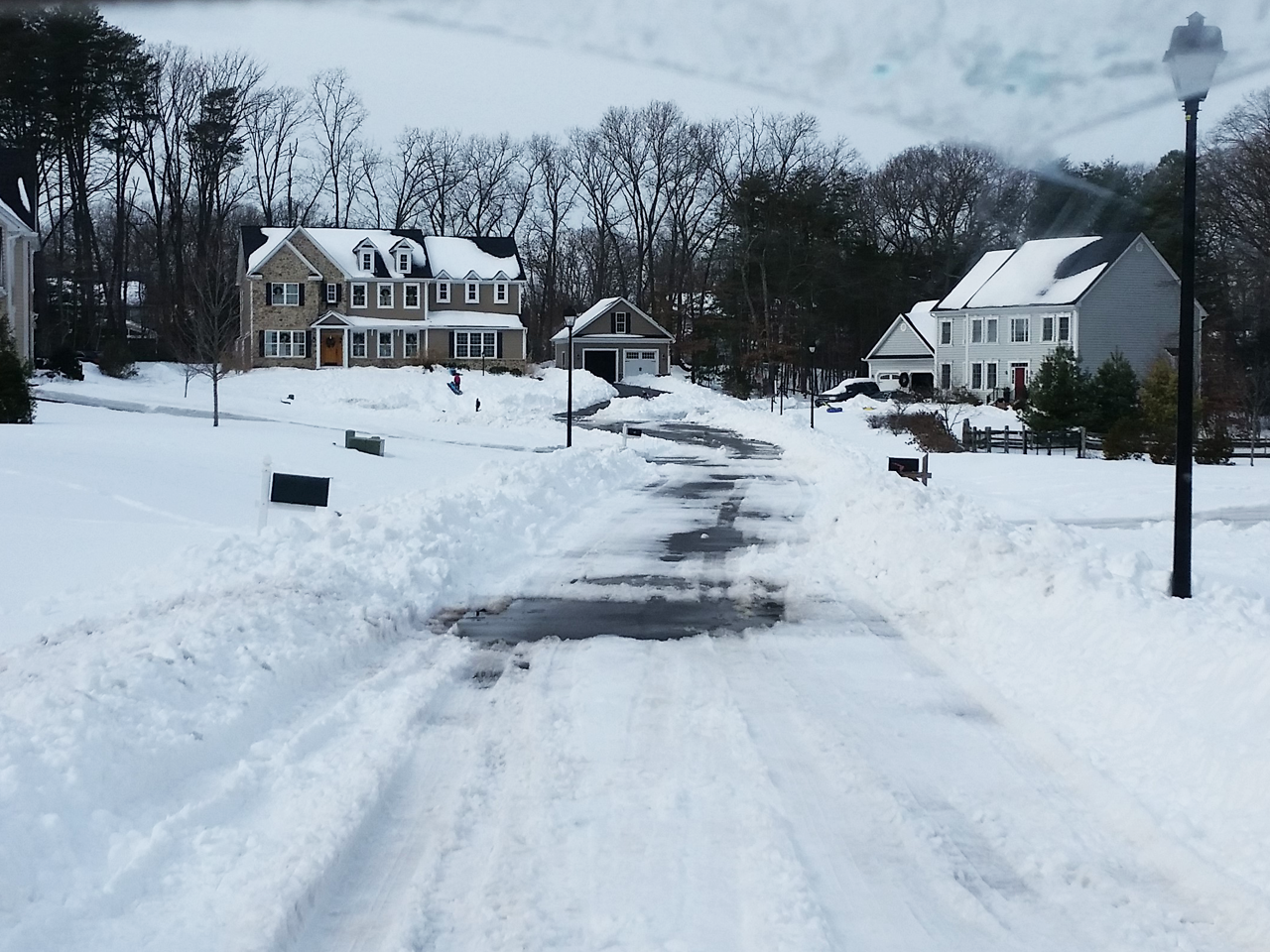
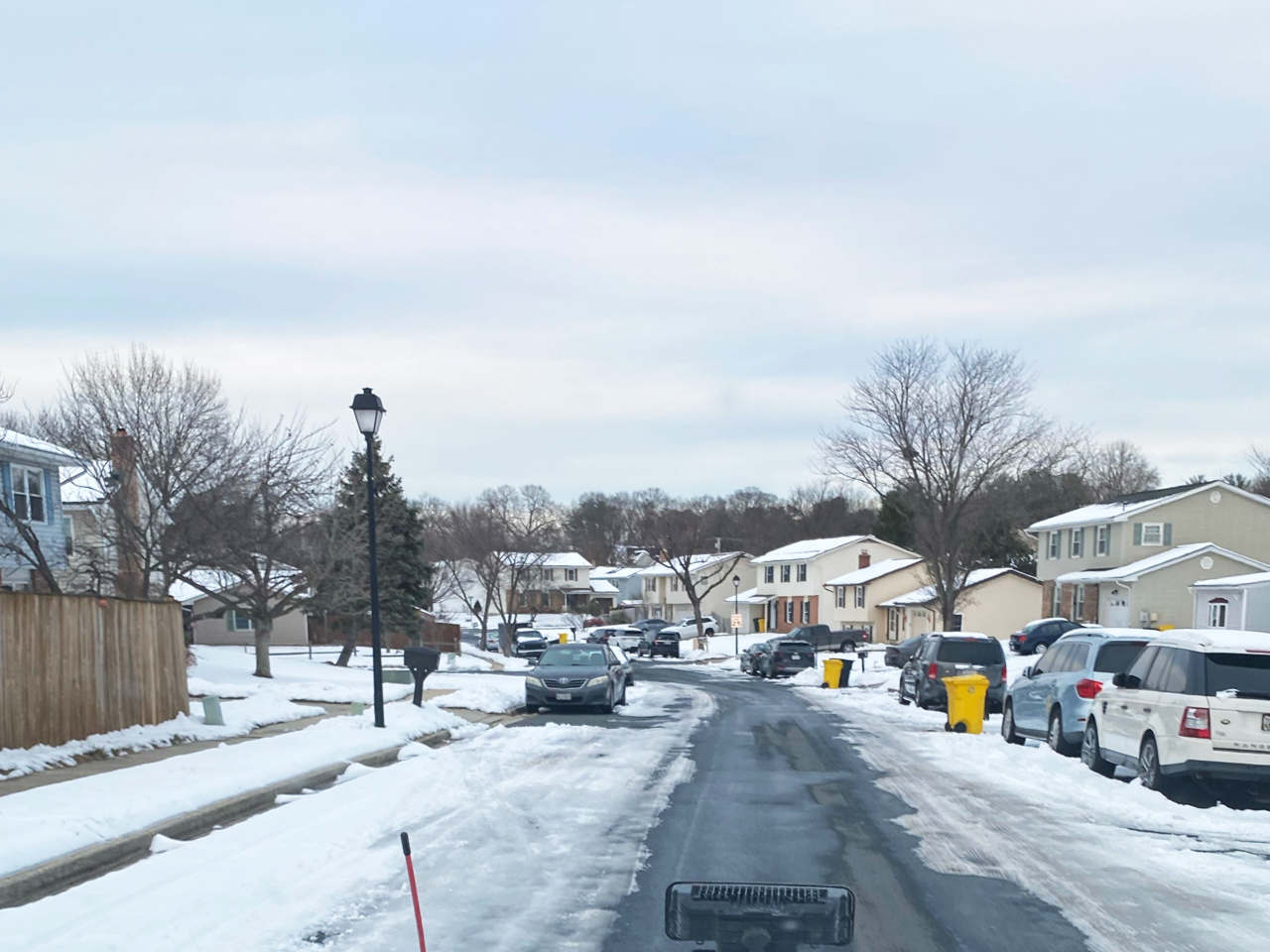
|
Bare Pavement
| Passable |
Plowing equipment will attempt to plow residential streets and cul‐de‐sacs in a specific manner. de‐sac should be passable, but not necessarily cleared to bare pavement as explained in our Travel Guide.
The County incurs proportionally more time, effort and cost clearing snow from cul-de-sac. In order to increase efficiency, crews will follow these standards in plowing snow from cul-de-sac.
These standards will also explain how residents can help our snow plow operators be most effective when responding to winter weather.
Facts
Merriam-Webster.com defines a cul-de-sac as a street or passage closed at one end. (Figure 1)
In urban planning, a cul-de-sac is created to limit through-traffic in residential areas. The cul-de-sac is a
local street that primarily serves to provide access to properties rather than a transport function.
The County’s inventory of more than 6,300 roads classifies over 1,300 of these roads as cul-de-sac or courts. Many County residents live on cul-de-sac. Many residents share different opinions on the manner in which snow plowing operations should be conducted.
Preferred Plowing Strategy
The Department of Public Works makes one pass on the outside of the cul-de-sac, pushing snow toward the center. If cul-de-sac dimensions or a plowing vehicle’s size prevents plowing in a continuous turning movement, the plowing vehicle will make multiple linear passes on the outside of the cul-de-sac, pushing snow to available areas on the perimeter of the cul-de-sac, to approximate a single, continuous pass.
This allows residents to access their driveways and exit out of the cul-de-sac.
If conditions dictate, additional clearing of the cul-de-sac may occur in the storm cleanup phase.
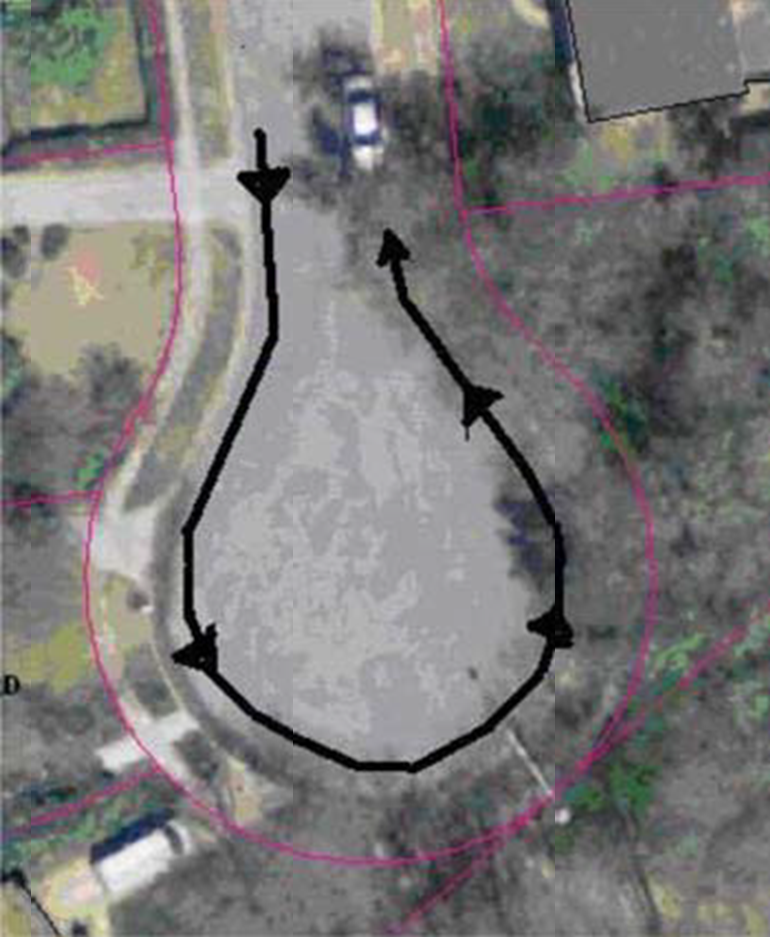
Figure 1 - Typical cul-de-sac
Help Us Help You
The County’s preferred plowing strategy cannot be implemented if certain conditions exist within the cul-
de-sac. Chiefly among these are:
- Vehicles parked at curbside;
- Vehicles parked “head in” around the cul-de-sac;
- Adequate space for snow storage within the cul-de-sac;
- Fire hydrants; or
- Portable basketball goals and other structures in the public right-of-way.
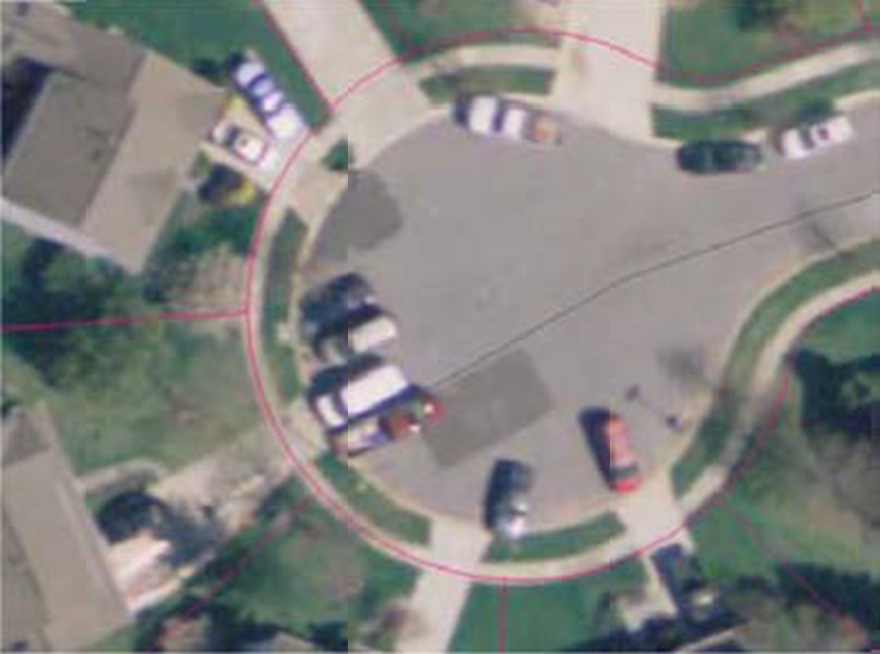
Figure 2 - Parking prevents plowing around the cul-de-sac
The County recommends that no vehicles be parked in the cul-de-sac when winter weather approaches.
When snow plow operators encounter vehicles, this causes maneuverability issues and the preferred
plowing strategy cannot be implemented. Also, inappropriately parked vehicles on the street leading to
the cul-de-sac may impede access to the cul-de-sac.
Alternate Plowing Strategy
If any condition prevents execution of the County’s preferred plowing strategy, forces will clear a central
path through the cul-de-sac. Snow will be pushed to the best available location in the public right-of-way
which least impacts residents.
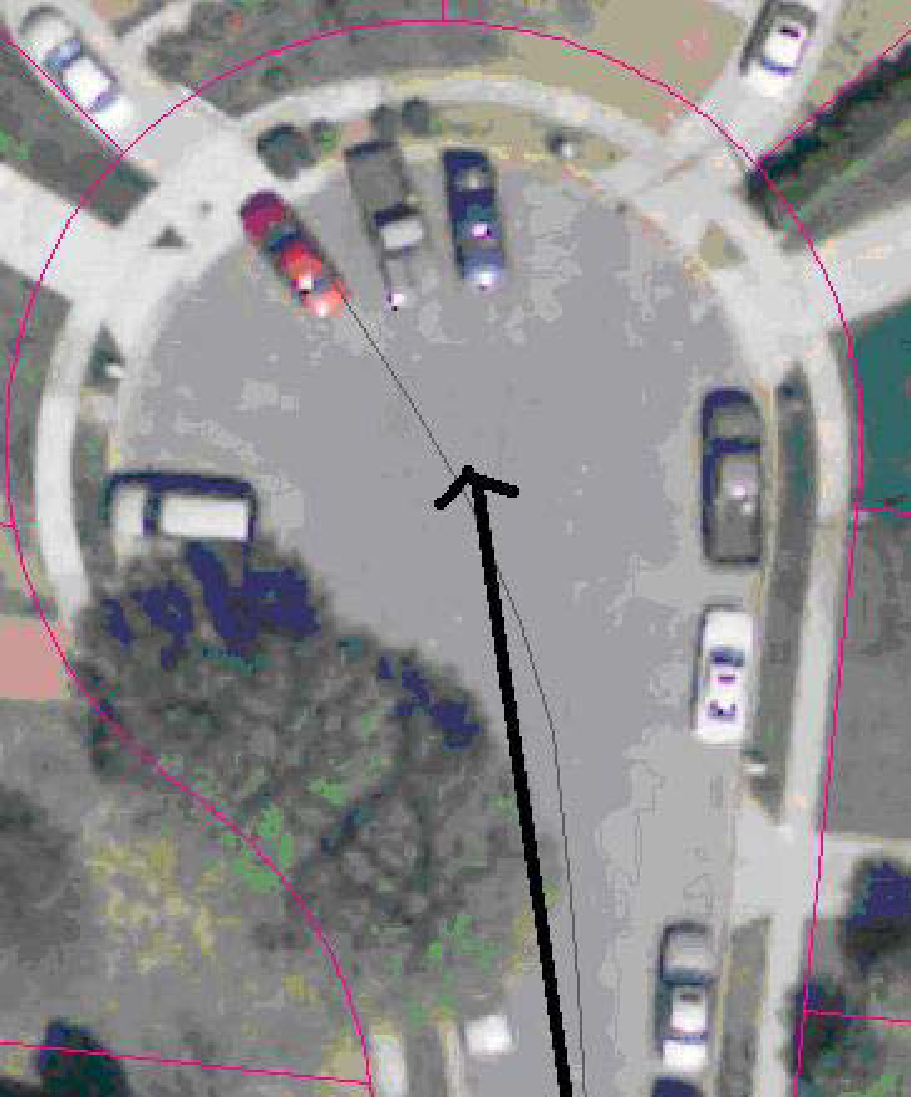
Figure 3 - Plows will clear a central path
During a typical storm (under 6 inches), snow removal operations on County-maintained roadways should be completed within 24-36 hours after the end of the storm. In order to meet these published levels of service, County forces are supplemented with contract forces. Main and collector roads will be plowed to bare pavement. Our next priority will be ensuring residential streets are passable. Passable is not the same as bare pavement. Passable means that although the road may be snow-covered or snow-packed, at least one travel lane will be accessible with a front-wheel drive car.
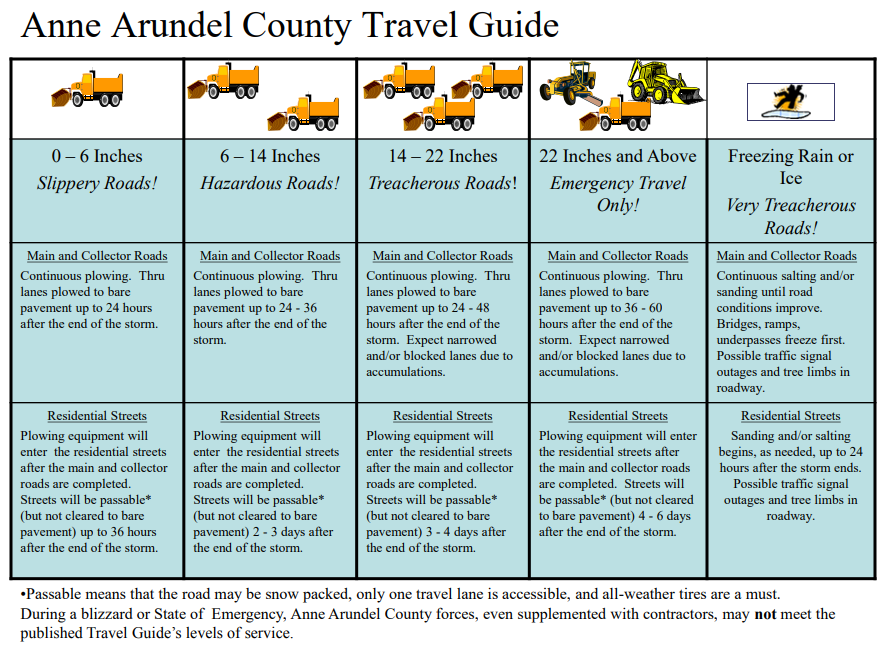
Clear Your Sidewalks -County residents are required by law to clear sidewalks in front of and alongside their properties within six hours after the fall of snow except that, if it snows between 3:00 p.m. and 6:00 a.m. residents shall remove the snow and ice before 11:00 a.m. But don’t just do it because it’s the law.
- Do it for school kids
- Do it for older adults
- Do it for folks who depend on transit
- Do it for yourself and your family
- When shoveling, please keep snow clear from fire hydrants
Driveways - When shoveling, stand facing the street and shovel snow to the right into the yard instead of into the street. This helps reduce the amount of snow the plow may re-deposit across driveway entrances. We recommend parking your car in your driveway, if you have one. Crews can do a much better job clearing your street of snow without maneuvering around parked vehicles. If possible, wait to shovel the end of your driveway until crews have made one pass as the plow will deposit a line of snow across the driveway entrance and this is unavoidable.
Traffic Cameras - Using the County's nearly 50 traffic cameras, check road conditions before venturing out.
Power Outages - Snow storms, hurricanes, tornadoes, thunderstorms, and numerous other hazards can lead to a disruption in utilities. Contact BG&E (877-778-2222) to get power outage information or to report a problem.
Property Damage Claims - Report property damage claims to a driveway, fence, mailbox, or vehicle due to a County snowplow. Contact Risk Management at (410) 222-7630.
Who Else Plows Snow in Anne Arundel County - The State of Maryland, the Federal Government, other County departments, agencies, and jurisdictions as well as some homeowners associations also have responsibility for plowing.
- Maryland State Highway Administration - Clears Interstate and State-maintained roads (all numbered roads) in the County
- Annapolis City - Clears city maintained roads in the County
- Anne Arundel Office of Transportation - Clears the busiest transit bus shelters and bus stops
- Anne Arundel County Public Schools - Treats and plows school driveways, parking lots, sidewalks, etc.
- Anne Arundel County Recreation & Parks - Clears roads, driveways, parking lots, sidewalks on County Park land
- Federal Government Agencies within the County such as the Social Security Administration and Department of Defense - Clear roads, driveways, parking lots, sidewalks, etc.
- Commercial parking lot owners plow their own properties and are prohibited from moving snow into the street
- Homeowners Associations
- Other County jurisdictions such as Highland Beach
Weather Forecasts - National Weather Service, WeatherBug, and the Weather Channel provide up to the minute weather information, forecasts, severe weather warnings and alerts.
Alert Anne Arundel Emergency Notifications - Anne Arundel County utilizes an emergency notification system, CivicReady©, capable of contacting citizens and businesses quickly in case of an emergency. CivicReady© alerts the public of emergencies and disasters, safety measures to be taken, and information pertaining to government operations.
- Park your vehicles in your driveway if at all possible. On-street parking is one of the biggest challenges our snowplow drivers face. If off-street parking is not available, it is strongly recommended that you park your vehicles on one side of the road to insure accessibility for our snowplow drivers.If our snowplow drivers feel they cannot safely access your street, no service will be provided.
- Residents in cul-de-sacs should park in driveways or parallel with the right-hand wheels 12 inches from the right-hand curb in accordance with County code 13-3-102(e)(2). One misplaced vehicle in a cul-de-sac may prevent it from being plowed.
- Help avoid the frustration that occurs should a snowplow cover your driveway entrance with snow after you have shoveled. Try to wait to shovel the end of your driveway until the snowplow has made one pass. When shoveling, stand facing the street and shovel snow to the right into the yard instead of into the street. Please remember that snowplows plow to the right and shoveling your driveway snow to the right will help reduce the amount of snow the plow re-deposits across your driveway entrance.
- Clear your sidewalk of any snow accumulation.
- Caution your children to stay clear of snow removal equipment.
- Volunteer to assist the elderly and disabled citizens of Anne Arundel County by contacting the Department of Aging at (410) 222-4257. For more information, please visit https://www.aacounty.org/services/volunteer
- Don't leave your empty trash can, recycling bins, or other obstacles in the street. Our drivers thank you for helping them to perform their job safely.
- Don't place snow from sidewalks or driveways in the street.
- Stay at home! Every car left at home reduces the number of stranded vehicles that slow down snow removal operations.
- The Office of Emergency Management provides information on preparing for winter storms including the latest from FEMA and DHHS.
- Carry a "survival kit" in your vehicle consisting of blankets, flashlight, non-perishable foods, drinking water, protective clothing, sand (or other traction material) and a shovel.
- Maintain a full tank of gas if travel during adverse weather is absolutely necessary.
- Check for the proper operation of home emergency equipment, such as battery operated radios, flashlights, emergency heating sources, smoke detectors, carbon monoxide detectors and fire extinguishers. Have furnaces, wood burning stoves and fireplaces checked for safe operation and have chimneys cleaned. Always dispose of fireplace ashes in an approved metal container, not in a plastic or paper bag or unapproved container.
- Store some non-perishable foods for use in emergencies and keep an adequate supply of medications and baby supplies on-hand if needed.
- Plan to prevent water pipes from freezing during periods of intense cold by properly insulating pipes or draining water from exposed pipes. As a last resort, maintain minimum water flow to prevent freezing.
- Wear proper clothing for weather conditions. Several layers of loose fitting, warm clothing are better than one thick garment. Wear hats and mittens or gloves when exposed to the cold.
- Those with a medical condition should maintain an adequate supply of essential medications.
- Pace physical activity, such as snow shoveling or pushing cars. Regardless of age or physical condition, avoid overexertion. Elderly persons should be cautious in attempting snow removal.
In addition to the work that is done by the Bureau of Highways to keep County roads safe during the winter months with responsible de-icing practices, there's also a lot that individuals can do to help reduce winter salts entering our local waterways and the Chesapeake Bay!
- Shovel Right Away.
- Don’t Use Too Much Salt
- Sweep & Reuse
Answers to frequently asked winter weather questions are available on the Bureau of Highways FAQ Resource Page.
Winter storms may cause delays in curbside trash, recycling, and yard waste collection. We appreciate your patience as crews work to catch up on collections after the storm has concluded. Please leave your materials at the curb until collections can be completed. Trash and recycling collections will be the priority, and yard waste will be collected as resources allow. Streets must be safe to travel for collections to occur. Please remove snow and ice from and around your containers and place them where collections can be easily made. Please follow this link to our Bureau of Waste Management Services where information is posted on storm impacts to service and schedules.

